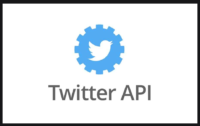5 Data Analytics Projects For Beginners
The demand for data analysts is skyrocketing, with job openings expected to grow exponentially in the next decade. This growth opens up exciting career opportunities for aspiring analysts. Engaging in hands-on projects is crucial for applying what you’ve learned in real-world scenarios. This article presents five beginner-friendly data analysis projects to help you develop practical skills and enhance your portfolio.
1. Exploratory Data Analysis with Python (Pandas)
As an aspiring data analyst, you’ll want to demonstrate a few key skills in your portfolio and EDA is one of them.
Exploratory data analysis (EDA) is simply a technique that data professionals can use to understand a dataset before they start to model it.
It may include steps like:
- Observing the data
- Finding missing values
- Categorize your values
- Finding the shape of your dataset
- Identifying relationship in your dataset
- Locating outliers in your dataset
If you’re not familiar with the pandas library, feel free to check out Datafrik course on python.
Analyzing Movie Data
IMDb provides us with dataset containing extensive information about movies, including ratings, genres, and revenue.
The aim of this project is to perform exploratory data analysis (EDA) to uncover trends in movie genres, ratings, and box office revenue. For example, you might calculate the average rating for different genres or identify the most popular genre of the past decade to uncover hidden insights.
2. Exploring E-commerce Sales Data
Studies show that more than 30% of data analyzed by data analysts are sales data. You can find publicly available e-commerce datasets on platforms like Kaggle.
Follow these tips when exploring a dataset:
- Analyze the sales trends and customer demographics
- Look into metrics like average order value and the best-selling products in the dataset
- Test hypotheses and validate assumptions about the data
- Think about what problems you could potentially solve with the data
3. Data Cleaning (Data Scrubbing)
Data cleaning (also called data scrubbing) is the process of removing incorrect and duplicate data, managing any holes in the data, and ensuring consistent formatting.
Data cleaning is performed on “dirty” dataset. Data which was gathered from multiple sources, you can find one here
A few of the actions involved in data scrubbing include:
- Handling missing values
- Correcting data types
- Encoding categorical variables
Gain access to multiple dataset
4. Data Visualization
Humans are visual creatures, which makes data visualization a powerful tool for transforming data into a compelling story. Mastering data visualization is important as it simplifies complex data into charts and graphs making it easy for shareholders to easily understand how a business is doing. Great visualizations are not only fun to create, but they also have the power to grow a company’s revenue.
There are various tool with which you can create compelling visuals are:
Load up your dataset into any of the tools listed above begin visualizing.
One important tip when visualizing data is to utilize the right chart and colors effectively.
5. Sentimental Analysis
Sentiment analysis is a technique used in natural language processing (NLP) to determine and extract the emotional tone or sentiment expressed in a piece of text. It is a technique in natural language processing (NLP) for determining whether data is neutral, positive, or negative.
Social media platform data are ideal for this analyzing how people feel.
Below listed are sites from which you can get data to start analyzing people opinions on certain topics:
- Amazon (product reviews)
- Rotten Tomato (movie reviews)
- News sites
Conclusion
In conclusion, embarking on your journey as a data analyst can be both exciting and rewarding, especially when you start with beginner-friendly projects. The five projects outlined in this article—ranging from data cleaning and exploration to visualizations and basic machine learning—offer an excellent foundation for building the skills necessary to excel in the field. Remember, the goal of these beginner projects isn’t just to finish them but to explore and experiment with different approaches. Consistent practice leads to mastery.







